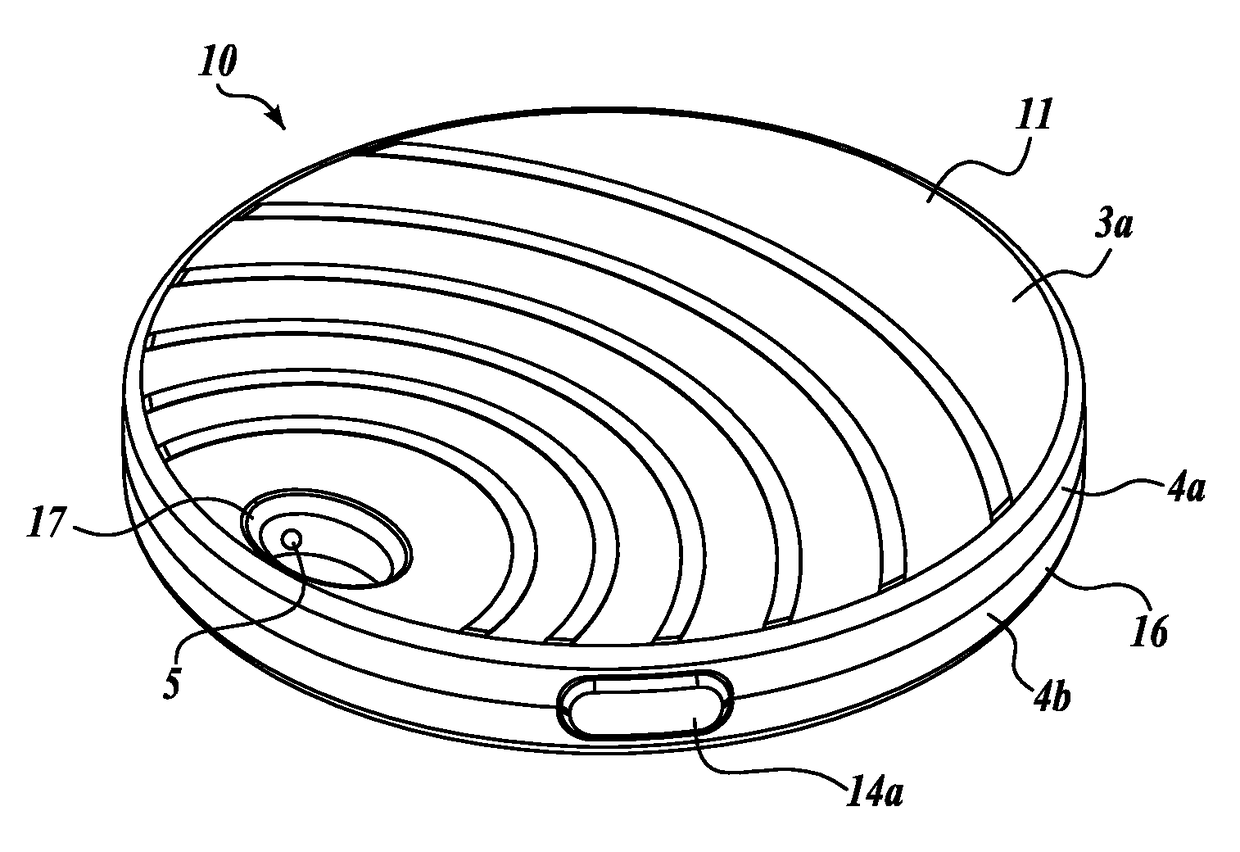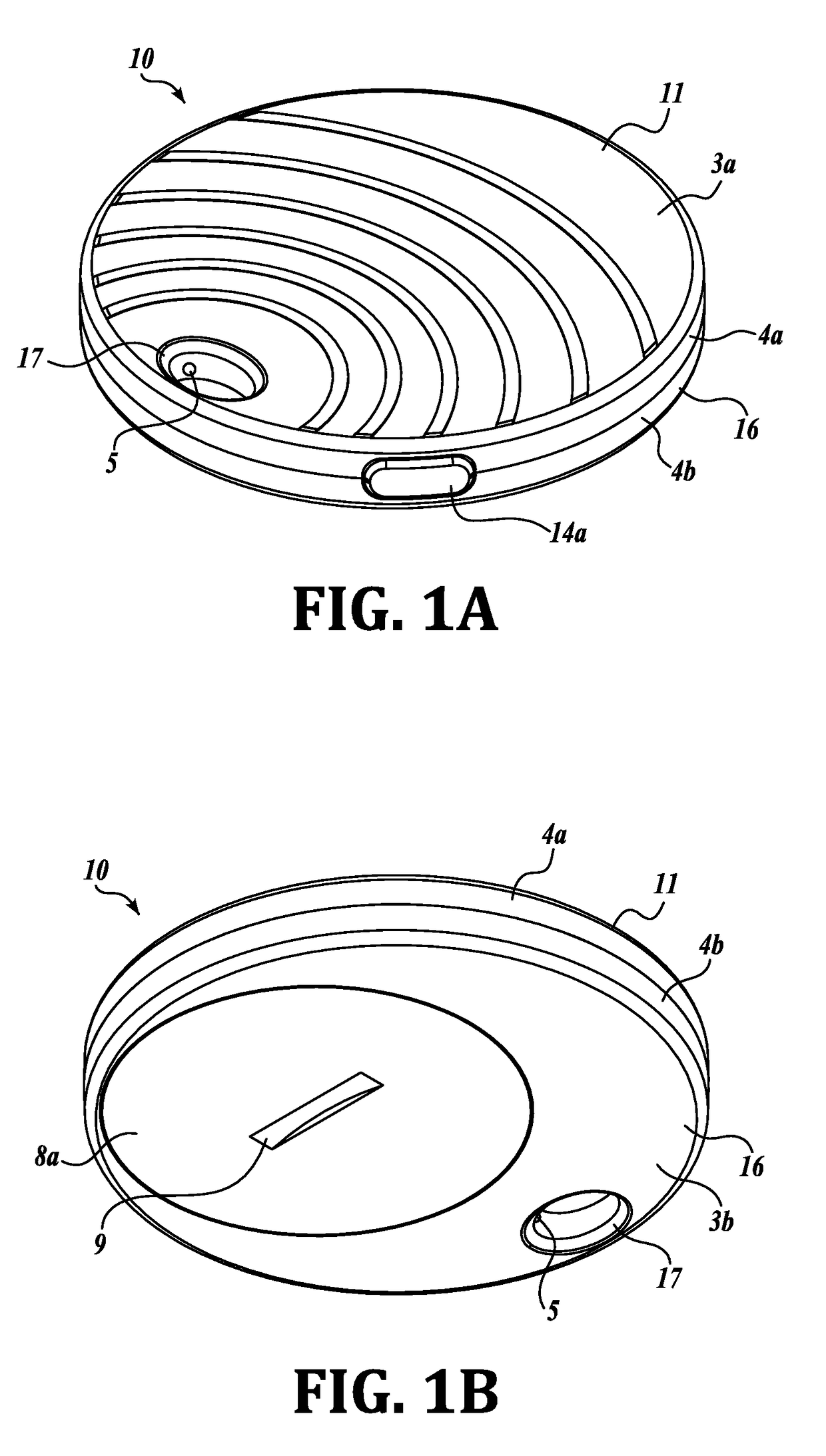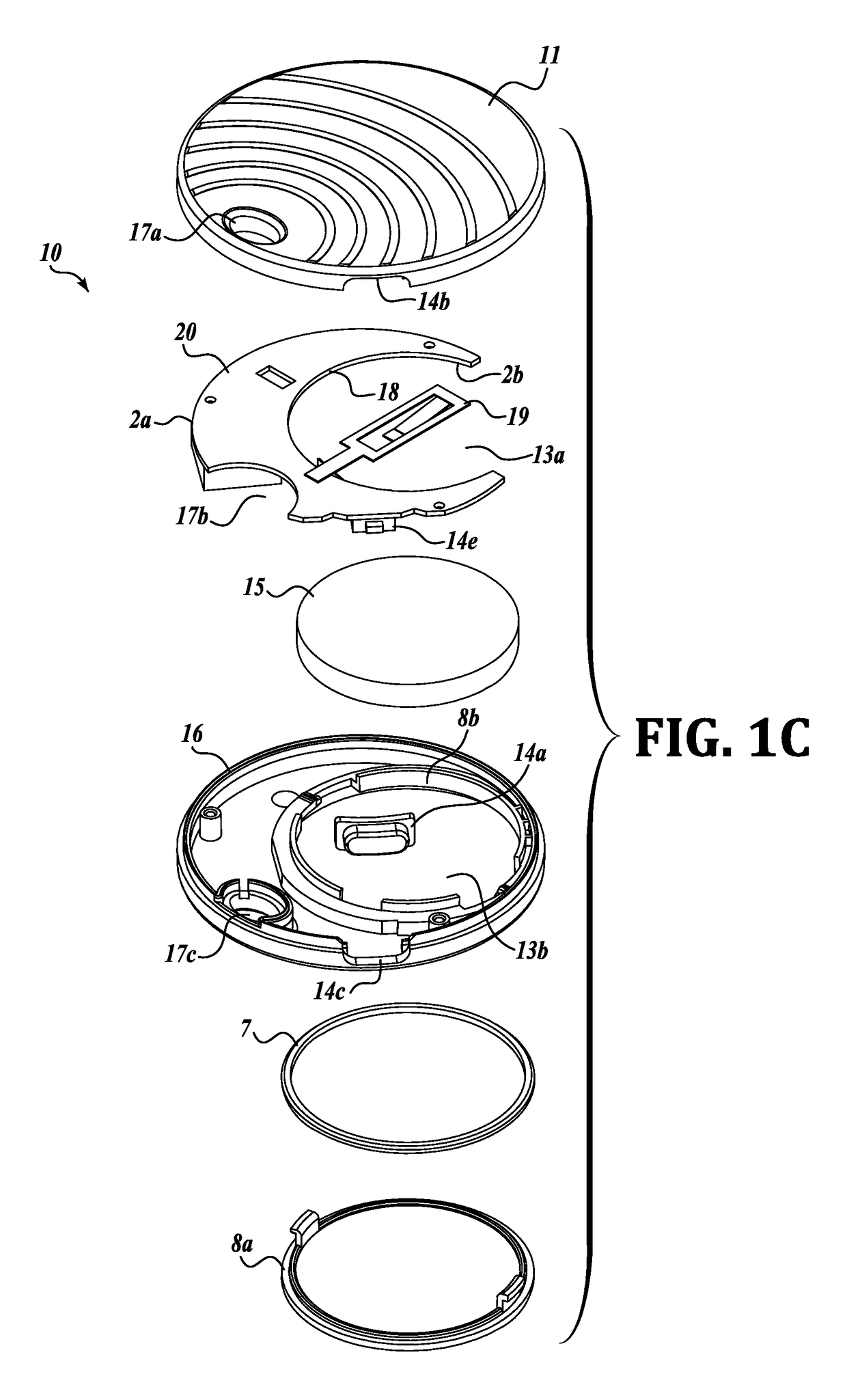Tracking device program
a tracking device and program technology, applied in the field of wireless electronic tracking devices and networks, can solve the problems of incompatibility or cost-effective individuals, prior art solutions that do not address the problem, and the need to operate a gps system often rapidly drains the battery, so as to reduce the thickness of the tracking device, save space, and save power and space
- Summary
- Abstract
- Description
- Claims
- Application Information
AI Technical Summary
Benefits of technology
Problems solved by technology
Method used
Image
Examples
embodiment 45
[0073]A second, wider area network embodiment 45 is shown in FIG. 5. There a plurality of hubs H11, H12, H21, . . . H1N, HMN are distributed over a predetermined area, such as a warehouse, college campus, hospital, airports, and offices. In a warehouse, tracking devices 33 are attached to stored items and any particular stored item can be immediately located by triangulating its position from the range signals detected by the hubs. On a college campus, the tracking devices could locate a lost smartphone, computer or book. In hospitals and offices the tracking devices could be attached to files so that anyone could find a desired file by accessing the cloud / internet 35.
embodiment 50
[0074]A third network embodiment 50 is shown in FIG. 6. An owner of multiple tracking devices 31, 32, 33 operates a control apparatus 70 that has two-way communication via cloud / internet 35 with the tracking devices 31, 32, 33. A server 58 is also in two-way communication with the cloud / internet 35. The server 58 includes one or more databases 60 that keep records on owners, users and each tracking device. For user of the network 50, the database 60 would show the devices owned by the user or those devices for which the user had granted or received one or more privileges or are marked for public access, the identity of each device that is owned or subject to a privilege granted or received, the information reported by each sensor of each device, including and not limited to the time the information was received and the location of the control apparatus that receives the information. At any time the owner 70 of the tracking devices 31-33 may view the historic information on the locat...
PUM
 Login to View More
Login to View More Abstract
Description
Claims
Application Information
 Login to View More
Login to View More - R&D
- Intellectual Property
- Life Sciences
- Materials
- Tech Scout
- Unparalleled Data Quality
- Higher Quality Content
- 60% Fewer Hallucinations
Browse by: Latest US Patents, China's latest patents, Technical Efficacy Thesaurus, Application Domain, Technology Topic, Popular Technical Reports.
© 2025 PatSnap. All rights reserved.Legal|Privacy policy|Modern Slavery Act Transparency Statement|Sitemap|About US| Contact US: help@patsnap.com



